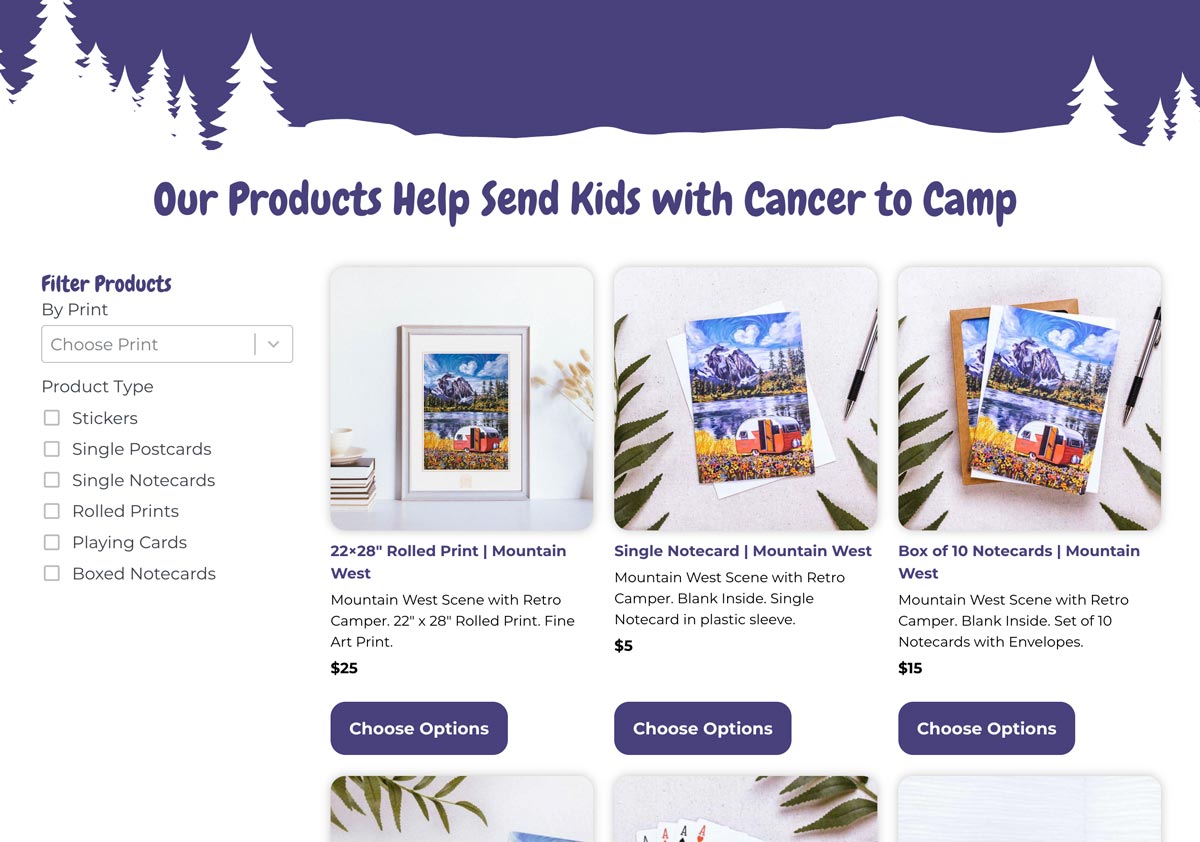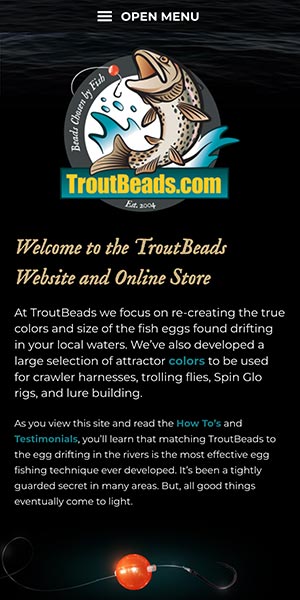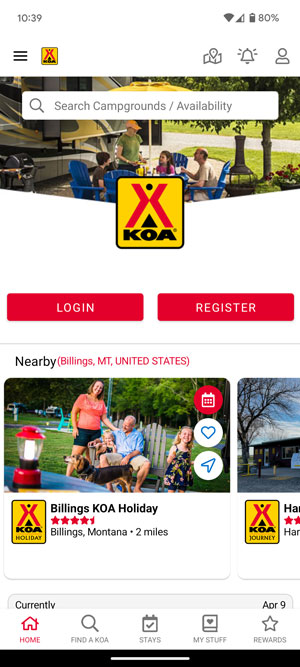Easily sell your products online with an e-commerce website
Selling online isn’t just for the big players anymore, it’s for anyone with something great to offer. An e-commerce website gives you a digital storefront where customers can browse, buy, and connect with your brand 24/7.
Let’s Build an E-commerce Site
Make selling online simple
While marketplaces like Etsy or Amazon have their place, owning your own e-commerce site gives you full control. It’s your brand, your data, your customer relationships. With the right setup, your website becomes more than a place to make sales, it becomes the foundation of your business growth.
Custom Designed E-commerce Themes
Speed & Security Optimized
Full Control over Products
E-commerce Website Options
There are SO many platforms to build and sell products online. Tempest Technologies specializes in WordPress and .NET sites, but depending on your specific needs there are other self-hosted solutions like Shopify, Etsy, Amazon, Wix, and Squarespace (to name a few). No matter the platform, Tempest can help your site grow in visibility with expert digital marketing. Some of the most popular e-commerce site approaches from our team:
WordPress + Payment Form
Simple & direct
Ideal for service-based businesses or organizations that don’t need a full shopping cart system. A branded, simple order form can streamline sales and inquiries without the complexity of managing inventory. You can sell single products, as well as subscription services such as paid memberships, recurring subscriptions, and even donations. We’ve even used this approach to help businesses sell hospitality reservations, such as for JJJ Wilderness Ranch. Building a payment form is usually a quicker method to integrate e-commerce, but can be limited when you need more complex functionality like a shopping cart.
WordPress + WooCommerce
Extreme Flexibility
Perfect for small to mid-sized businesses (like troutbeads.com) that want flexibility, scalability, and complete ownership. WooCommerce integrates seamlessly with WordPress, making it easy to manage products, track orders, and optimize for SEO. The base WooCommerce plugin offers plenty of functionality for things like simple and variable products, as well as a fairly robust coupon discount, payment, shipping, account, and email management. If you need more features or control over your store, there are thousands of extension plugins – both free and paid – to make your online store whatever it needs to be.
.NET Enterprise E-Commerce
bells & whistles
For high-volume or enterprise-level sites that demand custom features, integrations, and scalability. Our .NET team builds robust systems designed for performance and reliability – handling everything from complex product data to multi-location logistics. Websites that need a 100% customized e-commerce platform with advanced and complex logic or integration with other systems via API integrations will look to .NET solutions. While .NET enterprise isn’t the right fit for everyone, those that need the power, flexibility, and data integrations can trust Tempest. We built KOA.com as a .NET enterprise site.
Some examples of our e-commerce sites:
Things to think about when planning a successful e-commerce site
So you want to build an e-commerce site? No matter which route you go, there are best practices worth following to ensure a good user experience & conversion rate.
Product Engagement
If you have an amazing and groundbreaking product, then you gotta show it off! Showcase what you sell with high-quality photos and detailed descriptions. Clarity matters, so make sure you’re putting yourself in your buyer’s shoes (ESPECIALLY if you’re selling shoes), think about what questions or concerns they might have – and answer them right on the page. Things like unique value, maintenance/upkeep, warranties, build quality, etc. Don’t forget to include all the helpful metadata too – things like dimensions, weight, and variations so buyers can not only find exactly what they’re looking for, but can make an informed purchase decision.
Checkout Experience
Whether you’re doing a simple form, or a full shopping cart and checkout experience, always keep the user in mind. Keep checkout forms small and to the point, don’t collect unnecessary information, and make sure the pages load FAST. You want to reduce any friction points during search and checkout, anything that could slow your buyer down or make them second guess. This is called conversion rate optimization (CRO), which basically means don’t make it hard to purchase your products. You also want to make sure the buyer is comfortable and confident in their purchase, so make sure to communicate all the important information such as return policies, payment options, shipping options, etc.
Bonus tip: try to keep shipping simple. It’s very easy to get in the weeds with different shipping providers, rates for different geographic areas, or extra fees and charges. If it makes sense for your business, stick with flat rate shipping or even free shipping. You can always build it into the price of your products, and your customers will thank you for the simplicity.
Order Management
Many don’t give a lot of thought to what happens AFTER the online purchase. Behind the scenes, fulfillment should be seamless. Fulfillment can be as simple as an automated email triggered to an admin or third-party, and as complex as an API call to a third-party booking system. Make sure you have a process in place that streamlines the after-purchase experience for both yourself as a seller, and the buyer. Have a system for communication with the buyer for things like followup questions, cancellations/refunds, and shipping tracking numbers.
Marketing & Analytics
If your site isn’t optimized for search or promoted online, it’s like opening a store in the middle of the desert – beautiful, but empty. SEO and digital marketing are the paths that lead customers to your door. Make sure your site is seen by the search engines, share it on other social platforms, purchase some Google Ads, and get as many eyeballs on it as you can.
You also can’t make data-driven decisions if you have no data, so utilize the great tools out there to track website visits and engagement, purchases and user behavior. We utilize Google Analytics for all our websites as a powerful and free reporting data tool, and Microsoft Clarity as a free user experience tracking platform. Both work great with WordPress, WooCommerce, and .NET enterprise sites.
The Tempest Technologies difference
We’ve built e-commerce websites for everyone from small retail startups to enterprise businesses processing millions in online revenue per day.
Our team knows the ins and outs of e-commerce, including custom extensions, complex integrations, and scaling solutions. Beyond development, we bring the digital marketing tools that make e-commerce thrive – SEO, paid ads, content strategy, and performance tracking – so your store doesn’t just look great, it performs.
When you partner with Tempest, you’re not getting a one-size-fits-all solution. You’re getting a trusted digital partner who understands how to design, build, and market e-commerce sites that convert.
Send Us a MessageFrequently Asked Questions
E-commerce pricing varies based on complexity, integrations, and design needs. A basic store can start in the low thousands, while a custom enterprise build can scale much higher. We’ll work with you to outline goals, functionality, and budget – so you only pay for what you actually need.
A payment gateway is what securely takes payment information such as credit card info, processes a payment with the buyer’s bank, then triggers a payment confirmation. We can integrate a variety of payment gateways – from Stripe, PayPal, and Square. When integrating with a gateway like Stripe, there are options for modern payment options like Google and Apple Pay, or buy now pay later.
Security is non-negotiable. Every e-commerce site we build includes SSL encryption, secure payment gateways, and best practices for user data protection. We also provide hosting, monitoring, and maintenance to keep your site safe and compliant.
Absolutely. We specialize in digital marketing that drives e-commerce growth – SEO, Google Ads, product feeds, social media campaigns, and more. We’ll help you attract the right traffic and turn visitors into repeat customers.
Timelines vary depending on the scope of your site. A smaller store can launch in as little as 6–10 weeks, while more complex builds with custom functionality may take longer. We’ll provide a clear timeline upfront so you know exactly what to expect.
Not at all. We offer ongoing support plans for updates, maintenance, and content help. If you’d rather stay focused on running your business, our team can handle the tech side and keep things running smoothly.
Yes – and it’s a top priority. Every site we build is mobile-first and fully responsive, ensuring your customers can browse and buy easily on phones and tablets.
We integrate analytics tools like Google Analytics 4, Google Search Console, and e-commerce reporting dashboards so you can see what’s working, where visitors come from, and what products perform best. You’ll have full visibility into your online performance.
Other stuff we’re really good at:
we are such stuff as dreams are made on
William Shakespeare, “The Tempest” – Act 4






